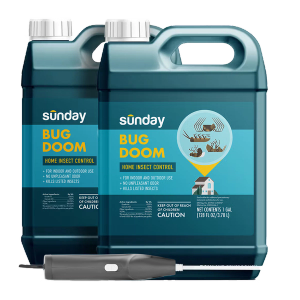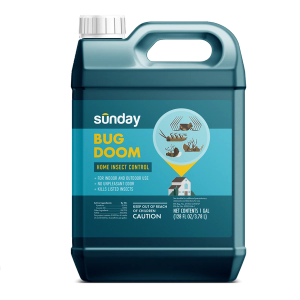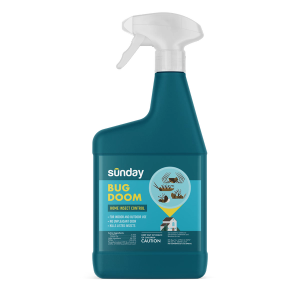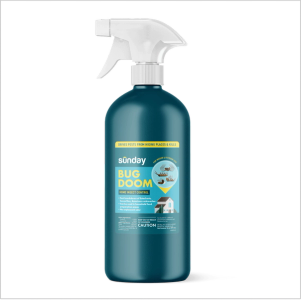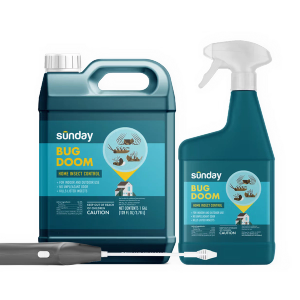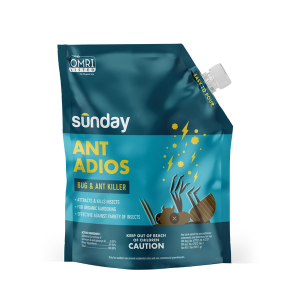Pests require a few things to live and breed successfully: the right climate, food and water availability, and sufficient habitat or shelter.
Conveniently for pests, we humans tend to provide all these things in ample amounts—that's why we tend to have pests in and alongside the structure of our homes, sheds, and other buildings on our properties.
So, what is a vegetation-free zone?
A vegetation-free zone (or VFZ) is a perimeter border without vegetation intended to provide increased safety around a human structure. It could also improve accessibility and prevent fire, moisture influx, and pests.

Benefits of a vegetation-free zone
VFZs can help you physically deter pests from entering your home and other areas—among other things!
Keep pests out of your home
Limiting habitat and structural entryways next to your home will reduce pests' ability to enter your home easily.
For example, restricting habitat that supports crawling pests like earwigs and millipedes will limit the predators that feed on them, including spiders and centipedes.
Create a tidier landscape
While shrubs and other vegetation provide us privacy and aesthetics, improper placement or management (such as not pruning) will become unsightly for you and perfect breeding grounds for pests close to your home.
Deter burrowing rodents
When VFZs are installed with the right stone specification (1-inch crushed stone, not smooth river rock) and at least 6 inches deep, you can reduce potential issues with pests like rats and groundhogs.
Reduce fire and flood risks
Creating a pest-centered VFZ deters pests, but proper home barriers and landscaping can also help reduce fire and flood risks too!
DIY vegetation-free zone
Install proper hardscape
Install 6- to 18-inch wide barriers alongside structures made of crushed stone (e.g. masonry, pebbles) that do not include any plantings, are not moisture collection areas, and have a weed barrier installed beneath the stone.
Maintain your VFZ barrier
Maintain a 6- to 18-inch barrier between the home and your plants and mulch beds that can encourage moisture-loving pests.
Landscaping like groundcovers, grasses, vines, shrubs, trees, and mulch all retain moisture. This creates a habitat for pests like earwigs, mites, and mosquitoes and provides food, water, and shelter for various other pests and predators that feed on those pests, like spiders.
Move pest hiding spots
Move pest hiding spots like garden decor and landscape timber away from the home's structure and doorways to reduce shelter and harborage to pests.
Sunday Tip:
Piles of trash, firewood, leaf, and natural debris piles, or landscape formations can also harbor pests. Maintain in areas of your yard at least 2 feet from structures.
Repair screens and door sweeps
After removing harborage sites for pests around your home, repair open cracks, crevices, broken screens, and other entryways. Otherwise, even with a VFZ, pests can still get inside.
Update outdoor lighting
Alter exterior lighting to reduce pests near entryways. You can do this by changing the type of bulb (LEDs or yellow CFLs), facing the light position away from the structure, or putting lights on a motion detector or timer to turn off at night.
This makes your home less attractive to insects and the spiders that eat them!
Sunday Tip:
Bonus: Reduced lighting is also good for beneficial insects, like fireflies, that are active at night.
More pest prevention practices
- Direct water spouts, drainage, and irrigation away from the home to deter pests looking for habitat or water source.
- Avoid plants that produce attractive fruit along the perimeter of the home.
- Avoid planting pollinator gardens near entryways to the home to avoid potential stings or interactions with insects entering the home.
Cited sources
Building Perimeter Surfaces and Pests. Pest Control Technology.
Earwigs: No Big Deal. New York State Integrated Pest Management.
How do I manage ants? New York State Integrated Pest Management.
How Do I Manage Mites? New York State Integrated Pest Management
House centipedes. New York State Integrated Pest Management.
Management of Pest Insects In and Around the Home. UGA Cooperative Extension
Moisture Pests. New York State Integrated Pest Management.







